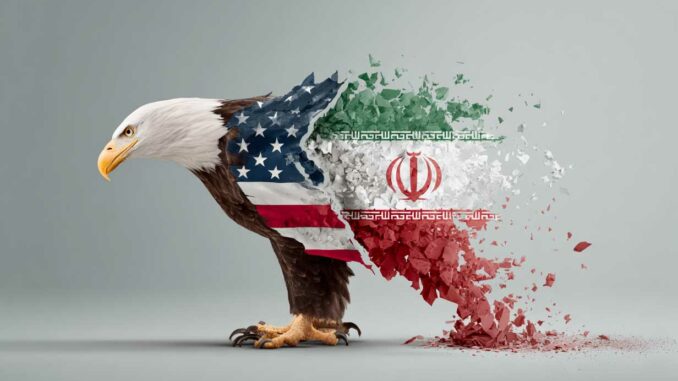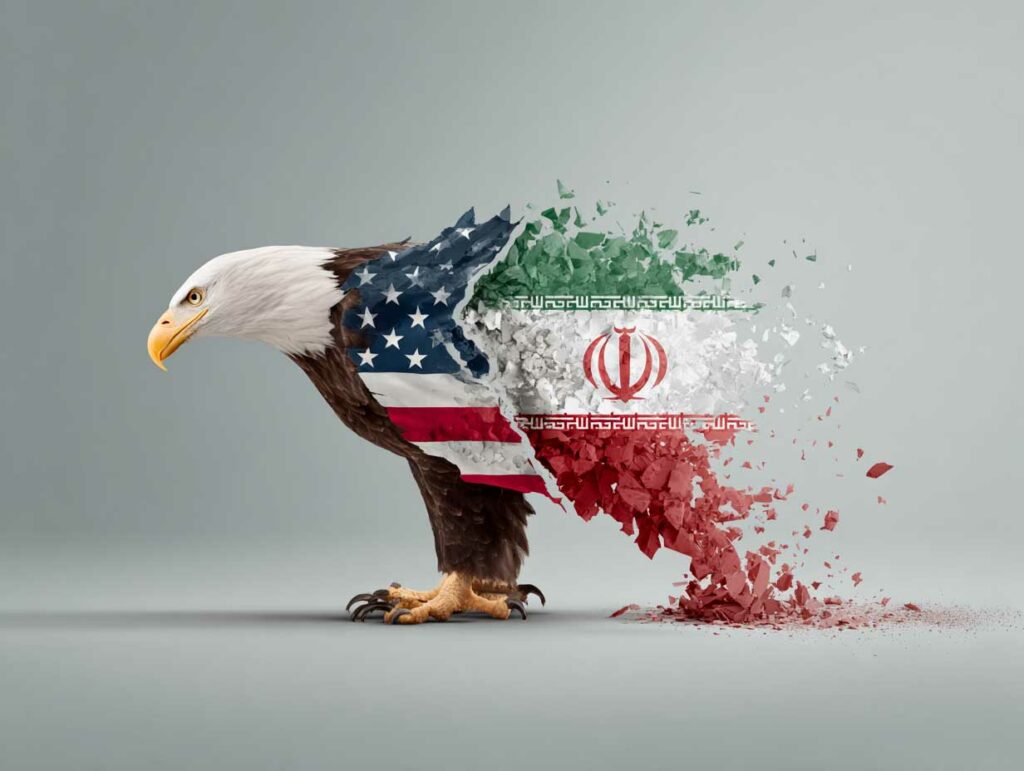
Explore Israel and U.S. goals vs. Iran and the likelihood of a U.S. bombing campaign to topple Iran’s regime. Estimated probability: 10-20%. (134 characters)
Tensions between Iran, Israel, and the United States have escalated following Israel’s June 2025 strikes on Iranian nuclear sites and military leaders. As Israel pushes to dismantle Iran’s nuclear program and weaken its regime, questions arise about whether the U.S. will join a sustained bombing campaign to force regime collapse. This article analyzes the tactical and strategic goals of Israel and the U.S., contrasting their approaches to Iran’s nuclear ambitions and regional influence. While Israel favors preemptive action, the U.S. prioritizes diplomacy and containment under Trump’s “no forever wars” stance. By evaluating recent developments, expert insights, and historical precedents, we estimate a 10-20% probability of a U.S.-led bombing campaign aimed at regime change, highlighting key factors like Iranian retaliation and logistical challenges.

Israel’s Goals:
Tactical: Disrupt Iran’s nuclear program to prevent it from achieving weapons-grade uranium enrichment or developing a functional nuclear bomb. This includes targeting key facilities like Natanz and Fordow, as well as eliminating senior military and nuclear personnel. Israel has demonstrated this through precise strikes, such as the June 2025 attacks that killed IRGC leaders and nuclear scientists.
Strategic: Weaken or collapse the Iranian regime to neutralize its regional influence and proxy networks (e.g., Hezbollah, Hamas, Houthis). Israel views Iran’s nuclear ambitions and support for anti-Israel groups as existential threats. Prime Minister Netanyahu has hinted at regime change as a broader aim, framing strikes as enabling the Iranian people to achieve “freedom.”
Approach: Israel employs a “mowing the grass” strategy—recurring strikes to degrade Iran’s capabilities without expecting a permanent resolution. It also seeks to leverage U.S. military power, particularly for targets like Fordow, which require advanced bunker-busting bombs that only the U.S. possesses.
United States’ Goals:
Tactical: Prevent Iran from acquiring nuclear weapons through a combination of diplomacy, sanctions, and military pressure. The U.S. has prioritized negotiations (e.g., the 2015 JCPOA and Trump’s 2025 60-day deadline for talks) but maintains military options if diplomacy fails. Recent Israeli strikes disrupted U.S.-Iran nuclear talks, complicating this approach.
Strategic: Contain Iran’s regional influence while avoiding entanglement in another prolonged Middle East conflict. The Trump administration has emphasized a “maximum pressure” campaign via sanctions and expressed reluctance to engage in “forever wars,” though it supports Israel’s security.
Approach: The U.S. prefers to support Israel indirectly (e.g., providing THAAD defenses, intelligence, or weapons) rather than direct combat. However, it could be drawn into conflict if Iran retaliates against U.S. assets or if Israel’s actions leave Iran’s nuclear program intact, necessitating U.S. intervention to “finish the job.”
Iran’s Position:
Iran seeks to preserve its regime, maintain its nuclear program as a deterrent, and support its proxy network to counter Israel and U.S. influence. Recent Israeli strikes have weakened its military leadership and nuclear infrastructure, but Iran retains significant missile capabilities and expertise. It may accelerate its nuclear program in response to attacks, viewing a bomb as the ultimate deterrent.
Iran’s retaliation options are constrained by the degradation of proxies like Hezbollah and the fall of Syria’s Assad regime, but it could target U.S. bases or Gulf infrastructure, escalating the conflict.
Probability Assessment: U.S. Bombing Iran Until Regime Collapse
There are no explicit, reliable probabilities (e.g., from betting markets like Polymarket or expert consensus) in the provided data for a U.S. bombing campaign aimed at regime collapse. However, I can estimate likelihood based on strategic dynamics, historical precedents, and current sentiment. Let’s break it down:
Factors Increasing Likelihood
Israeli Pressure and U.S. Alliance: Israel’s strikes may be designed to provoke Iran into actions (e.g., attacking U.S. bases) that draw the U.S. into direct conflict. Some analysts suggest Israel hopes the U.S. will use its superior firepower to target hardened sites like Fordow. A June 2025 Polymarket spike to 50% odds for an Israeli strike (pre-June 13) reflects perceived escalation risks, which could extend to U.S. involvement.
Iranian Retaliation: If Iran targets U.S. assets in the region (e.g., bases in Bahrain, Qatar, or Iraq), the U.S. could respond with overwhelming force. A CENTCOM commander’s statement about readiness to respond if Iran doesn’t abandon its nuclear ambitions signals this possibility. Iran’s warning that U.S. intervention would lead to attacks on American bases increases this risk.
Republican Support for Regime Change: Some U.S. Republicans align with Israel’s view that now is an opportune moment to topple Iran’s regime, given its weakened proxies and leadership losses. This could pressure Trump to act, especially if diplomacy fails.
Nuclear Breakout Risk: If Iran, feeling cornered, accelerates its nuclear program or exits the Non-Proliferation Treaty, the U.S. might see military action as the only way to prevent a nuclear-armed Iran, potentially targeting regime infrastructure to destabilize it.
Factors Decreasing Likelihood
Trump’s Reluctance for “Forever Wars”: Trump has repeatedly promised to avoid prolonged Middle East conflicts, a key pledge to his base. He has distanced himself from Israel’s June 2025 strikes, suggesting a preference for diplomacy or letting Israel and Iran “fight it out.”
Limited U.S. Capabilities Against Hardened Sites: Even with B-2 bombers and Massive Ordnance Penetrators, destroying Iran’s underground facilities (e.g., Fordow) is uncertain. A sustained campaign for regime collapse would require ground forces or prolonged bombing, risking high casualties and global economic fallout (e.g., oil price spikes if Iran closes the Strait of Hormuz).
Risk of Escalation and Regional Backlash: A U.S. bombing campaign could alienate Arab allies (e.g., Saudi Arabia, UAE), who privately oppose Iran but fear regional instability. It could also embolden Iran’s proxies (e.g., Houthis) or trigger terrorism against U.S. interests.
Historical Precedents: U.S.-led regime change efforts in Iraq (2003) and Libya (2011) led to prolonged instability, making policymakers cautious. Experts warn that Iran’s collapse could create a power vacuum, potentially empowering worse actors like the IRGC.
Iran’s Resilience: Air campaigns rarely topple regimes without ground operations. Iran’s leadership is entrenched, and strikes could rally domestic support by framing the U.S. and Israel as aggressors.
Estimated Probability
Given these factors, I estimate the probability of the U.S. launching a sustained bombing campaign to collapse Iran’s regime as low to moderate, roughly 10-20% in the near term (next 6-12 months). This reflects:
A higher likelihood of limited U.S. strikes (e.g., targeting nuclear sites) if Iran escalates, but not a full-scale campaign for regime change.
Trump’s preference for diplomacy or proxy action via Israel, tempered by political pressure from pro-Israel hawks.
The strategic and logistical challenges of regime collapse, outweighing short-term gains.
If Iran retaliates against U.S. assets or provably advances its nuclear program, the probability could rise to 30-40%, but a full commitment to regime change remains unlikely without broader congressional or public support, which is currently absent.

Critical Considerations
Unintended Escalation: Wars often spiral beyond initial intent. A limited U.S. strike could provoke Iran to disrupt global energy markets or activate proxies, forcing deeper U.S. involvement.
Domestic Iranian Dynamics: Strikes might strengthen the regime’s grip if Iranians rally against external aggression, as seen during the Iran-Iraq War.
Global Implications: China and Russia, Iran’s partners, could exploit U.S. overreach to expand their influence, complicating the strategic calculus.
Israel and the U.S. share the goal of preventing a nuclear-armed Iran, but their approaches diverge: Israel favors preemptive strikes and regime change, while the U.S. leans toward diplomacy and containment. The probability of the U.S. bombing Iran until regime collapse is low to moderate (10-20%), constrained by Trump’s aversion to long wars, logistical challenges, and the risk of regional chaos. Escalation by Iran or pressure from Israel could increase this likelihood, but historical lessons and strategic caution suggest restraint. For updates, monitor U.S.-Iran diplomacy, Iran’s nuclear moves, and regional proxy activities.
War Wings Daily is an independant magazine.